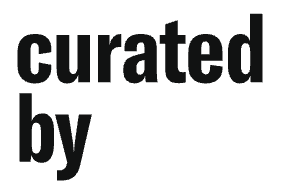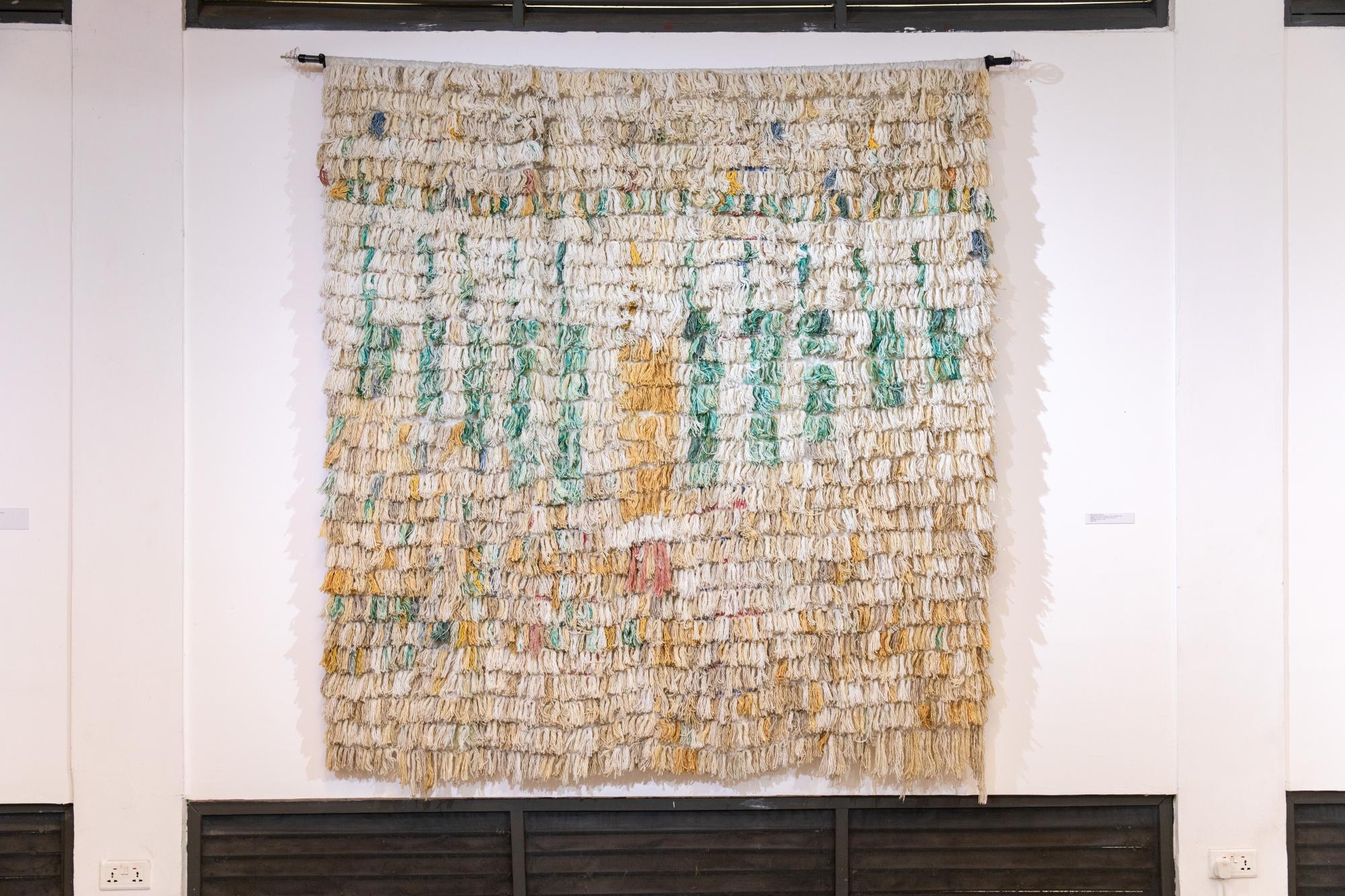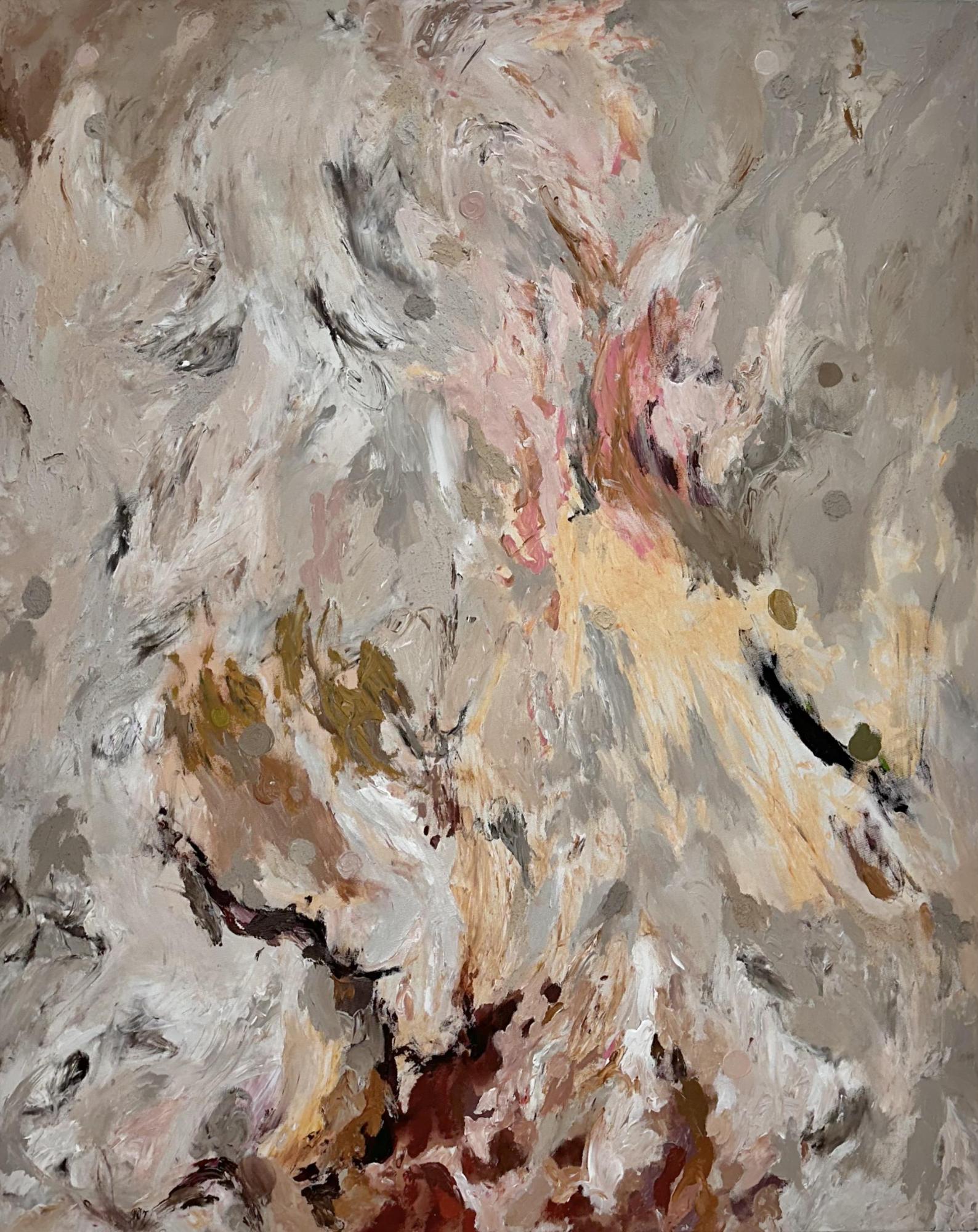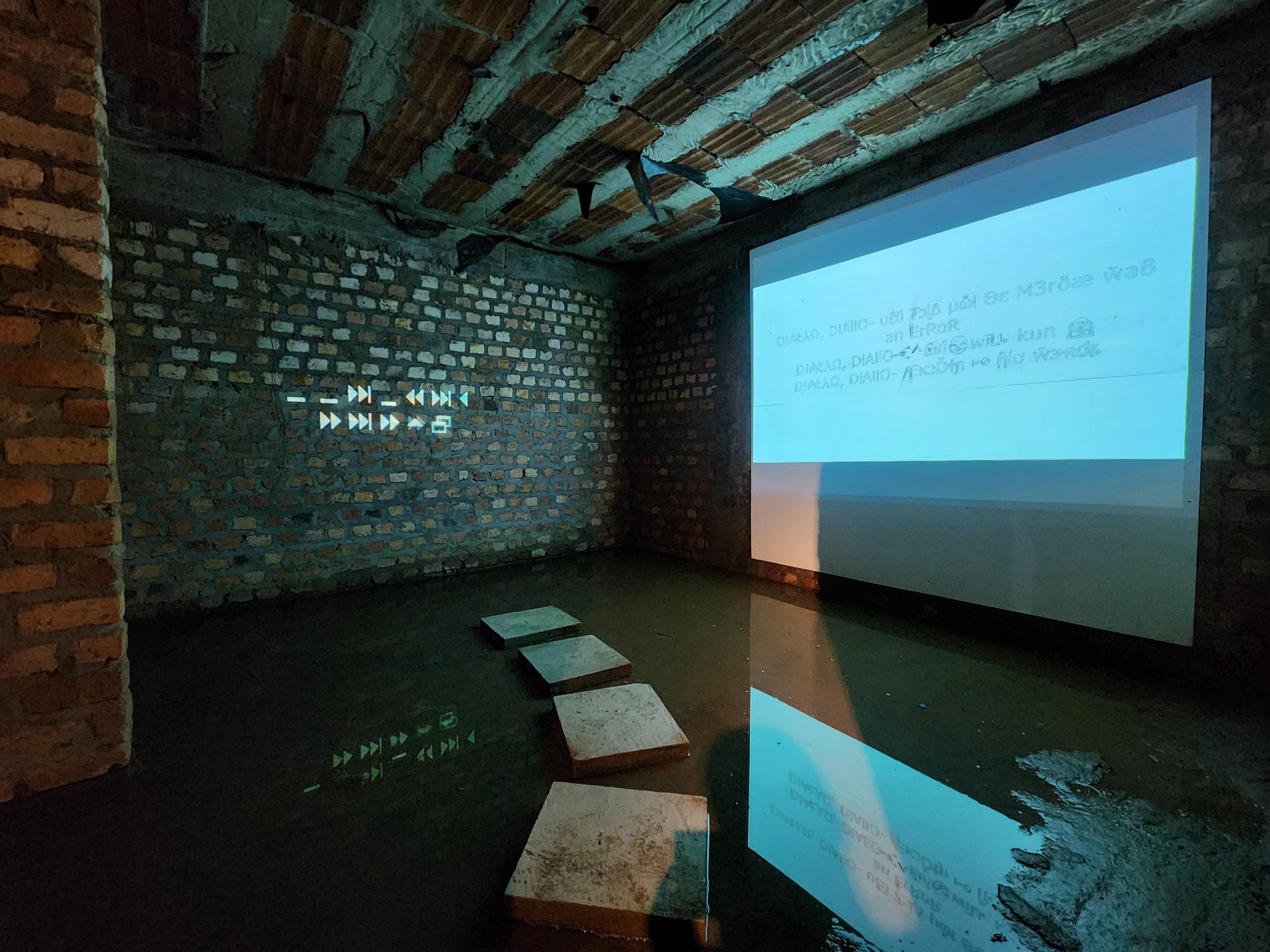Galerie Hubert Winter curated by Kwaku Boafo Kissiedu and Nuna Adisenu-Doe
„The Allegory of Decoy“

www.galeriewinter.at
Curator(s):

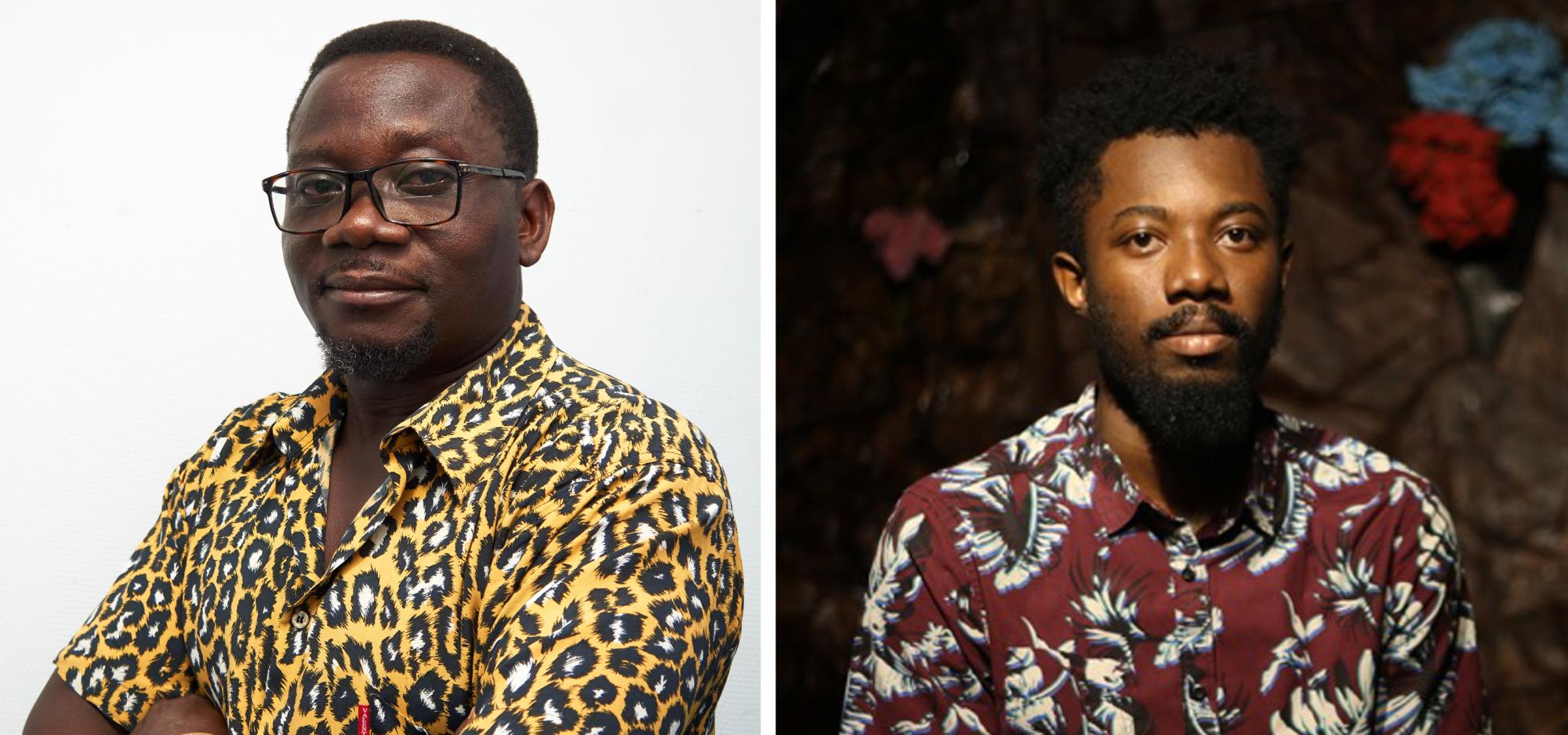
Artist(s):
-
Akosua Odeibea Amoah-Yeboah MoreAkosua Odeibea Amoah-Yeboah (*1998) is a multidisciplinary artist who explores transformation through digital mediums. She is interested in systems of signs, language, appropriation, memes, politics of the body, and technology. She transforms these ideas from one form to another, as she sees the ideas as materials that can be expanded beyond their bare forms (materials of elasticity/malleability). Her works span from digital paintings and video installations to musical scripts and sounds. Her present works concisely hack into audio-visual software to create errors and glitches in readymade algorithms. This involves an ouroboros process of 'force-feeding' texts and videos to audio software, resulting in technological repulsion translated into dissonant sounds—like text or video data eating itself in an incompatible audio medium.
-
Kelvin Haizel MoreKelvin Kweku Haizel’s (b.1987) artistic practice spans painting, conceptual photography, and archival interventions. Beyond his paintings that borrow their aesthetic from transactional processes of paint retail shops across his home country, his photographic interests began with an ontological question – what is the object of an image? This interest has seen him develop experiments in manufacturing images via the expanded field of the photographical. From snap to staged, documentary to archival inquiry, his approach to image has been consistent with his interest in unsettling the privilege accorded to the picture as the site of meaning, relying on historic events as a decoy. His extended bodies of work seem to ask what can images do? It is a materialist attitude towards the production of images that sides with the multiplicity and plasticity of the image in its phenomenological manifestations. Haizel’s materialist attitude to manufacturing images has resulted in different bodies of work that have shown in exhibitions in his home country Ghana and internationall
-
Gideon Hanyame MoreGideon Kobbla Hanyame, born in 1996 in Teshie-Nungua Zongo-Accra, Ghana, is an artist who lives and works between Accra, and Kumasi. He is passionate about the very process of art creation, where he explores and experiment with concepts. His works reflects a dynamic interplay of construction and deconstruction- delving into the notion of identity, flexibility, aesthetics, and the imitation of objects. He refers to his creatives as Nusia in the ewe language, translate in English as a thing due to the multiple characteristic it displays. This approach blends the disciplines of painting, sculpture, drawing, collage, and installation. Hanyame’s work is distinguished by his innovative use of both discarded and new materials, including string-wound water filters and flour sacks. He is best known for his intricate tapestries and installations, which often incorporate unique structural attachments. Through his creative process, Hanyame dismantles and reassembles forms, inviting the viewer to reconsider the boundaries between the tangible and the conceptual. His ability to merge the physicality of materials with abstract concepts creates a distinctive visual language that is both thought-provoking and visually compelling. Hanyame graduated with a degree in Bachelor of Fine Art from the Kwame Nkrumah University of Science and Technology, Kumasi. He is currently pursuing a Master of Fine Art at the same institution 2023 and 2024 respectively. In 2024, he was awarded the Baden-Württemberg Stipendium scholarship to study at Staatliche Akademie der Bildenden Künste, Karlsruhe Germany. He is a member of a project space and contemporary art incubator – blaxTARLINES of the department of painting and Sculpture, Kwame Nkrumah University of Science & Technology, Ghana. He has participated in group exhibition both internationally and locally, “After Life” in 2024 at Nubuke Foundation, Accra-Ghana, “Worldmaking” Curated by artist Gideon Appah and Ylinka Barotto in 2023 at Mitchell-Innes & Nash, London, and “A Little Like a Dream: Suspended in Time and Space” in the Nation Museum of Ghana, Accra. Also, in “Coordinate;6.682663, -1.574128”, a confluence of Art from Karlsruhe and Kumasi curated by Elolo Bosoka. In 2022, he participated in the “Remnant of our Dream” exhibition by Foundation for Contemporary Art-Ghana and 360 Project Gh curated by Awoa Amoah, Abbey IT-A, and Ato Annan. He was also a participant of the festival of weaving Tradition, Woori, Loho-wa.
- Ibrahim Mahama
- Afrane Makof
-
Daniel Arnan Quarshie MoreDaniel Arnan Quarshie (*1995) is a multidisciplinary artist whose practice spans drawing, installation, sculpture, and sound. His practice emerged as an attempt to redefine drawing to match up to others like painting and sculpture. His work deals with social themes like death, loss, absence, memory, and the passage of time, and engages with the politics of capitalism, labor, overconsumption, and environmental degradation. He continuously challenges his medium by borrowing from the mundane to investigate composition, form, scale, and display formats.
- Tracy Naa Koshie Thompson
Exhibition text
More
—Art as Decoy for Social and Political Change
The epoch that shaped diverse art practices and discourses within the Painting and Sculpture Department at KNUST (Kwame Nkrumah University of Science and Technology) has had a profound and far-reaching impact on artists in Ghana and beyond. This influence can be traced back to the silent revolution sparked by kąrî’kạchä seid’ou’s Emancipatory Art Teaching project, which was already gaining momentum by the 2000s. This revolution was not merely about transforming artistic techniques; it was deeply intertwined with broader theories of political movements, parts of which echoed the revolutionary ethos of Kwame Nkrumah. In Kwesi Ohene Ayeh’s “Notes on Contemporary Ghanaian Art: Histories and Emergences” he critically traces the history of the inherited colonial academic curriculum through pre-independence till date.
Nkrumah’s vision of decolonization extended beyond political independence, emphasizing the importance of cultural and intellectual emancipation. In this exhibition, the context of contemporary Ghanaian art, manifests as a form of "decoy," where art serves as a strategic tool to challenge and disrupt entrenched systems of power. The excesses of the global art world—often characterized by its commercial and institutional entanglements—are confronted through practices that prioritize experimentation and subversion, revealing the potential of art to serve as a vehicle for social and political change.
The notion of "decoy" in this context argues whether art has the power to disrupt the "distribution of the sensible"—the way in which social and political realities are perceived and understood. By engaging in practices that appear to conform to traditional artistic norms, yet subtly subvert them, artists can use art as a decoy to challenge dominant ideologies and offer alternative narratives. This approach is reflected in the work of blaxTARLINES, which, through its radical pedagogical practices, seeks to deconstruct historical narratives and reconstruct them in ways that address contemporary socio-political realities.
In the same vein, the work of theorists like Homi Bhabha, who explores the concept of hybridity, offers insights into how art can serve as a site of resistance and negotiation. By embracing hybridity, artists can create works that challenge the binary oppositions of colonizer and colonized, center and periphery, and instead, present a more nuanced and complex understanding of identity and power. This hybridity can itself function as a decoy, drawing viewers into familiar tropes only to disrupt and reconfigure them in ways that provoke critical reflection and inspire change.
The concept of beginning from the void, a principle central to blaxTARLINES, echoes Nkrumah’s vision of forging a new identity unbound by colonial constraints. This approach does not align with or privilege any particular medium or format of production but instead encourages attitudes of curiosity and experimentation. By embracing the chaos and remnants of history, artists here confront colonial legacies while creating an open space for the emergence of inventive forms of technological, cultural and political expressions.
This process of reconstruction is not just a means of looking back but also a strategic act of deflection—a decoy that reorients attention toward future possibilities of liberation.

